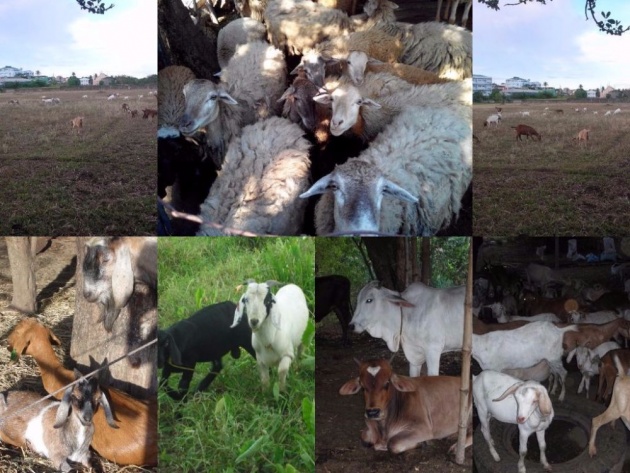
Ever wonder why pigs are given no grasses, mostly formulated ration, and rarely plant stalks while goats, cows and sheep are the otherwise? If you have these animals in your backyard, or you and your family own a farm, then you are very familiar to what I am talking about. Basically, all these animals are alike in the sense that they are all farm animals, but! They are considered different due to their differences in their nutrition, including the organ system responsible for it, which is the digestive system.
Basically, goats, cows and sheep are all part of the animal group called "ruminants". Their main difference from pigs and other simple-stomached mammals is that they have four-chambered stomachs. The food they eat undergoes four compartments in their stomach before getting digested. This mostly involves microbial action to further breakdown this food (which is mostly fiber).
RUMINANTS AND RUMINATION

Ruminants, as I have already mentioned, have this distinct thing in their way of eating their food. This distinct thing is called rumination which refers to the process of re-chewing what is so-called cud to further break down plant matter and stimulate digestion. Cud is a fermented ball of ingesta or initially digested ball of plant matter which is mostly fiber. From this distinct process came the term for ruminants, the Latin word ruminare which means "to chew over again".
There are quite a few animals that are considered ruminants. Let's discuss three of them.
GOATS: THE BIOLOGICAL HERBICIDE
Scientific Name: Capra hircus
Goats are known as "biological herbicide" because of their browsing ability when eating. They feed on grasses, shrubs and herbs. They are also capable of nibbling barks of trees and have mobile lips. They tend to walk long distances in search for food and are selective in terms of their feed preferences. They eat young shoot first.
Popular Goat Breeds in the Philippines

There are many known breeds of goats in the world but the available ones in the Philippines (where I live) are listed below. They are categorized as either dual purpose or dairy breeds.
A. DUAL PURPOSE
- Anglo-Nubian
- this is a tropical breed successfully adopted and grown in western countries; their distinguishing features are their drooping pendulous ears and roman nose - Boer
- intended to be raised for their meat and grow more rapidly than other goat breeds
B. DAIRY BREEDS
- Saanen
- this breed originated from Switzerland and has a pure white to off-white color; has the highest milk production among dairy breeds - Toggenburg
- also from Switzerland, smaller than Saanen goats with markings on the face, legs and tails as their distinguishing feature; it has erect ears like Saanen - Alpine
- a European breed with color ranging from off-white to red to black - La Mancha
- from Spain/Oregon with very distinct "gopher" or "elf" ears
Pointers on Goat Raising
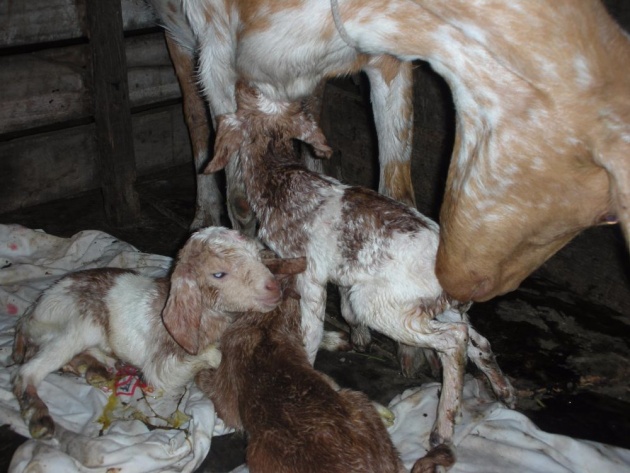
- It is usual to see a newborn kid at the side of a doe even when rearing a kid of its own.
- They prefer an elevated area of resting.
- They can be expected to live up to 13-15 years but their average economic lifespan is 6-8 years.
- Goats do not like rain or wetness as these can make them prone to pneumonia.
- In selecting breeder buck, consider the blood composition, constitution and vigor, breeding quality and aggressiveness.
- Selecting breeder does could be based on the number of offspring weaned per year per doe, animal mortality, length of production life and incidence of major defects.
SHEEP: THE BIOLOGICAL LAWN MOWER
Scientific Name: Ovis aries
Sheeps, on the other hand, are known as biological lawn mower because they are essentially grazers. They have flocking instinct and manifest pecking order among flocks. Compared to goats, sheep are less selective in their feed preference.
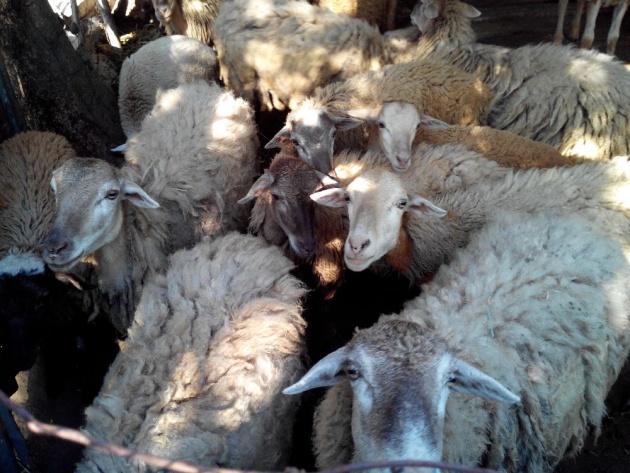
Popular Sheep Breeds in the Philippines
- Barbados Black Belly
- This breed originated from Barbados Island with African ancestry. It has adapted to wide range of environment, with high reproductive efficiency. Hair type. - Priangan
- This breed originated from Indonesia and primarily raised for ram-fighting and its meat. It is thin-tailed and often lacking of external ears. - Shropshire
- This breed originated from England and believed to be one of the ancestors of Philippine sheep. Wool type. - Suffolk
- This breed also originated from England with dark colored faces and legs. Wool type, and also raised for its meat. - Merino
- This breed originated from Spain and believed to be the other ancestor of Philippine sheep. It is the finest wool producer among sheep breeds.
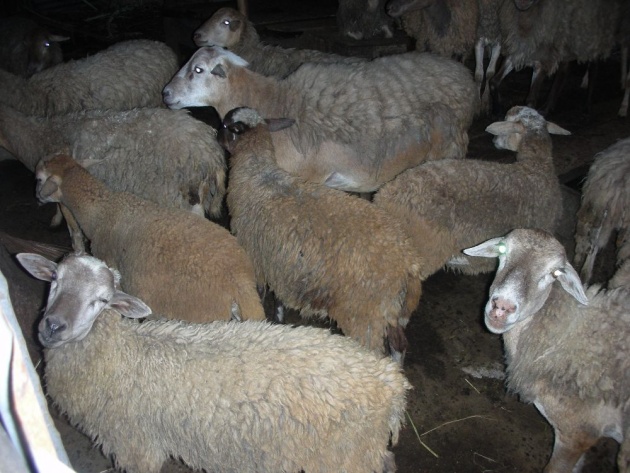
Pointers on Sheep Raising
- Consider the reason of raising sheep in breed selection (wool type, meat type, dual purpose, etc.); Also, consider the best breed to raise among the breeds within that category.
- For more useful information, check out this site I found online: www.sheep101.info/201/index.html
CATTLE: FOR MEAT, MILK AND DRAFT
The term cattle might be a little unfamiliar to you but this word is more known colloquially as cow. Cattle technically refers to all domesticated bovine animals. Cow, however, is not technically appropriate to be used to animals belonging to this classification as it only refers to mature female ox.
Useful Terminologies
- Ox - ruminant member of the bovine family; sometimes used to refer to a male used for draft purposes
- Calf - young ox of either sex under one year of age
- Bull calf - young male calf under one year of age
- Bull - male breeding ox of any age
- Bullock - usually a stag that is for draft purposes
- Stag - male ox castrated after sexual maturity
- Steer - male ox castrated before sexual maturity
- Heifer - young female ox under three years of age and has not yet given birth
- Cow - mature female ox that has given birth
Temperate Breeds and Tropical Breeds
The temperate breeds, collectively classified as Bos taurus, of cattle in the world are characterized with no humps and of European origins. Breeds under this include Angus, Chianina, Simmental and Ayrshire. In contrast, tropical breeds, collectively classified as Bos indicus, are with humps and oftenly with large pendulous ears. They have adapted to tropical conditions which are often characterized with extreme weather conditions. Breeds under this include Brahman, Indu-Brazil, Kankref, Krishna, Nellore and Red Sindhi.
Pointers on Cattle Raising
- Bulls and heifers reach sexual maturity at 6-8 months of age.
- Breeding can be done either by natural mating or through artificial insemination.
- Common feeds for cattle include forages, by-product roughage and concentrates.
- Calves should suckle colostrum milk from their mother with three hours after calving.
- Growers are usually maintained at the pasture with very little attention. They are given salt and mineral supplement.
- Fatteners require shorter period to reach slaughter weight. They are generally bigger, mature, or nearing maturity.
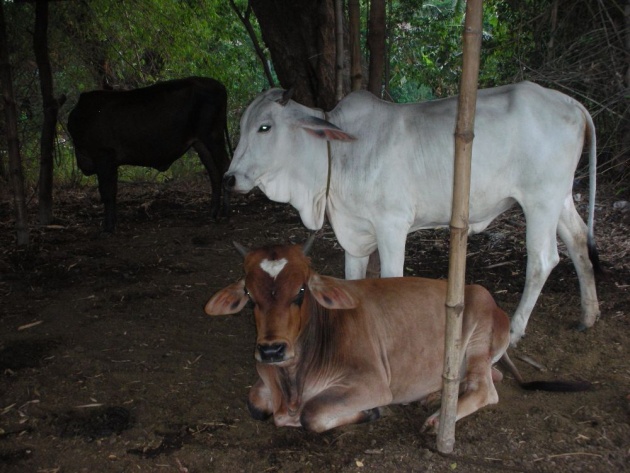 CARABAO: PHILIPPINES' NATIONAL ANIMAL
CARABAO: PHILIPPINES' NATIONAL ANIMAL
Scientific Name: Bubalus bubalis
Carabao is already a popular term in the Philippines. It is more technically referred to as water buffalo.
Useful Terminologies
- Caracalf - young carabo of either sex under one year of age
- Carabull - male breeding carabao of any age
- Caracow - mature female carabao that has given birth
- Caraheifer - young female carabo under three years of age and has not yet given birth
Types and Breeds of Water Buffalo
- Swamp type
- Breeds under this type includes Philippine carabao, Cambodian and Chinese buffaloes. They are characterized with color ranging from light gray to gray with white bands below the jaw and across the chest and legs. They also have sickle-shaped horns. - River type
- Breeds under this type includes Indian Murrah, Bulgarian Murrah and Brazilian Murrah. Their color ranges from black to dark gray with tightly curled or drooping straight horn.
Pointers on Carabao Raising
- The carabao can be bred throughout the year. Mating season usually takes place during wet season.
- Breeding can be done either by natural mating or through artificial insemination. Best time to inseminate is towards the end of estrus.
- Bull to cow ratio largely depends on the mating system adopted. Ideally, a carabull can be assigned to 20 females during the breeding season.
- Carabaos need both quantity (energy) and quality (protein) in their diets to grow well, just like any ruminant.
DISEASES IN RUMINANTS
Common Infection Diseases in Goats
In goats, the most common diseases include the following:
- Bacterial pneumonia
- Infectious arthritis
- Mastitis
- Foot and Mouth Disease
- Brucellosis
- Hemorrhagic septicemia
- Blackleg
- Tetanus
- Parasitic Gastroentiritis
- Parasitic pneumonia
- Tapeworm infection
- Liverfluke infestation
- Lice infestation
- Mange
- Bloat
- Acute indigestion or grain overload
Common Infection Diseases in Cattle
In cattle, some important diseases include:
- Foot and Mouth Disease (FMD)
- Hemorrhagic septicemia
- Anthrax
- Blackleg
- Tetanus



